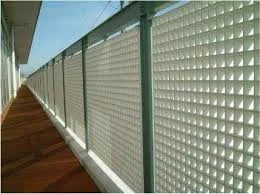
-
 Afrikaans
Afrikaans -
 Albanian
Albanian -
 Amharic
Amharic -
 Arabic
Arabic -
 Armenian
Armenian -
 Azerbaijani
Azerbaijani -
 Basque
Basque -
 Belarusian
Belarusian -
 Bengali
Bengali -
 Bosnian
Bosnian -
 Bulgarian
Bulgarian -
 Catalan
Catalan -
 Cebuano
Cebuano -
 China
China -
 China (Taiwan)
China (Taiwan) -
 Corsican
Corsican -
 Croatian
Croatian -
 Czech
Czech -
 Danish
Danish -
 Dutch
Dutch -
 English
English -
 Esperanto
Esperanto -
 Estonian
Estonian -
 Finnish
Finnish -
 French
French -
 Frisian
Frisian -
 Galician
Galician -
 Georgian
Georgian -
 German
German -
 Greek
Greek -
 Gujarati
Gujarati -
 Haitian Creole
Haitian Creole -
 hausa
hausa -
 hawaiian
hawaiian -
 Hebrew
Hebrew -
 Hindi
Hindi -
 Miao
Miao -
 Hungarian
Hungarian -
 Icelandic
Icelandic -
 igbo
igbo -
 Indonesian
Indonesian -
 irish
irish -
 Italian
Italian -
 Japanese
Japanese -
 Javanese
Javanese -
 Kannada
Kannada -
 kazakh
kazakh -
 Khmer
Khmer -
 Rwandese
Rwandese -
 Korean
Korean -
 Kurdish
Kurdish -
 Kyrgyz
Kyrgyz -
 Lao
Lao -
 Latin
Latin -
 Latvian
Latvian -
 Lithuanian
Lithuanian -
 Luxembourgish
Luxembourgish -
 Macedonian
Macedonian -
 Malgashi
Malgashi -
 Malay
Malay -
 Malayalam
Malayalam -
 Maltese
Maltese -
 Maori
Maori -
 Marathi
Marathi -
 Mongolian
Mongolian -
 Myanmar
Myanmar -
 Nepali
Nepali -
 Norwegian
Norwegian -
 Norwegian
Norwegian -
 Occitan
Occitan -
 Pashto
Pashto -
 Persian
Persian -
 Polish
Polish -
 Portuguese
Portuguese -
 Punjabi
Punjabi -
 Romanian
Romanian -
 Russian
Russian -
 Samoan
Samoan -
 Scottish Gaelic
Scottish Gaelic -
 Serbian
Serbian -
 Sesotho
Sesotho -
 Shona
Shona -
 Sindhi
Sindhi -
 Sinhala
Sinhala -
 Slovak
Slovak -
 Slovenian
Slovenian -
 Somali
Somali -
 Spanish
Spanish -
 Sundanese
Sundanese -
 Swahili
Swahili -
 Swedish
Swedish -
 Tagalog
Tagalog -
 Tajik
Tajik -
 Tamil
Tamil -
 Tatar
Tatar -
 Telugu
Telugu -
 Thai
Thai -
 Turkish
Turkish -
 Turkmen
Turkmen -
 Ukrainian
Ukrainian -
 Urdu
Urdu -
 Uighur
Uighur -
 Uzbek
Uzbek -
 Vietnamese
Vietnamese -
 Welsh
Welsh -
 Bantu
Bantu -
 Yiddish
Yiddish -
 Yoruba
Yoruba -
 Zulu
Zulu
Fiberglass Clarification System for Effective Water Treatment and Solid Removal Solutions
Fiberglass Clarifier System for Efficient Water Treatment and Solid Separation
In the context of increasing environmental concerns and the demand for sustainable water management, the development of effective water treatment technologies has become imperative. Among these technologies, the fiberglass clarifier system stands out as a robust solution for efficient water treatment and solid separation. This innovative system combines advanced materials with strategic design to enhance the purification process while minimizing energy consumption and operational costs.
Understanding the Fiberglass Clarifier System
A fiberglass clarifier system is primarily used in various industries, including municipal wastewater treatment, industrial processes, and even aquaculture, to separate solids from liquids effectively. The system utilizes a clarifying tank, typically made from fiberglass, which is lightweight, durable, and resistant to corrosion. This material choice significantly extends the lifespan of the equipment compared to traditional materials such as steel or concrete.
The primary mechanism of a clarifier involves gravitational settling, where particles suspended in liquid settle at the bottom of the tank. The design of the clarifier facilitates the optimal flow of water, allowing solids to settle efficiently while the clarified water overflow is collected for further processing or discharge.
Advantages of Fiberglass in Clarification
1. Corrosion Resistance One of the most significant benefits of fiberglass is its resistance to corrosion, particularly in harsh chemical environments. Such resilience makes fiberglass clarifiers ideal for applications involving saline or chemically aggressive fluids, ensuring long-term durability without the need for frequent replacements.
2. Lightweight Design The lightweight nature of fiberglass allows for easier transportation and installation. This feature is particularly advantageous when dealing with confined spaces or challenging environments where heavy machinery cannot easily operate.
4. Modular Construction Fiberglass clarifier systems can be designed in modular formats, allowing for scalability. This means that as demand for water treatment increases or as new regulations come into effect, facilities can easily expand their capacity without overhauling existing infrastructure.
fiberglass clarifier system for efficient water treatment and solid

Operational Efficiency
Efficient water treatment using a fiberglass clarifier system relies on optimizing several operational parameters
- Flow Rate The system’s design enables a steady flow rate, minimizing turbulence that could interfere with the settling process. Proper management of inflow rates is crucial to achieving optimal separation efficiency.
- Basin Design The layout and geometry of the clarifying basin play a critical role in enhancing sedimentation. Fiberglass clarifiers can be customized with tapered bottoms, allowing for better collection of sludge and quicker discharge, thus improving overall efficiency.
- Maintenance and Automation Modern fiberglass clarifiers often come equipped with automated controls for monitoring water levels, sludge buildup, and system performance, simplifying maintenance and ensuring consistency in operations.
Environmental Impact
Implementing a fiberglass clarifier system significantly benefits environmental sustainability. By effectively removing solids from wastewater, the system helps reduce pollutants that could otherwise harm aquatic ecosystems. Moreover, clearer water discharged back into water bodies contributes to better overall water quality, supporting biodiversity and protecting public health.
Conclusion
In conclusion, the fiberglass clarifier system represents a modern approach to water treatment with its myriad advantages in terms of material properties, operational efficiency, and environmental sustainability. As water scarcity and pollution challenges persist globally, the adoption of advanced technologies like fiberglass clarifiers is essential for achieving efficient and effective water treatment solutions. With continuous advancements in this field, the future of water management looks promising, paving the way for a cleaner and healthier environment.









